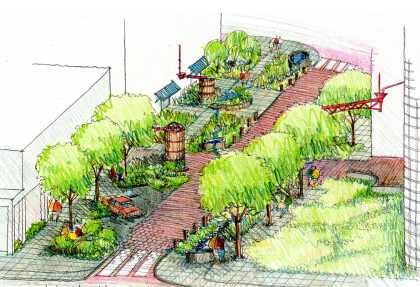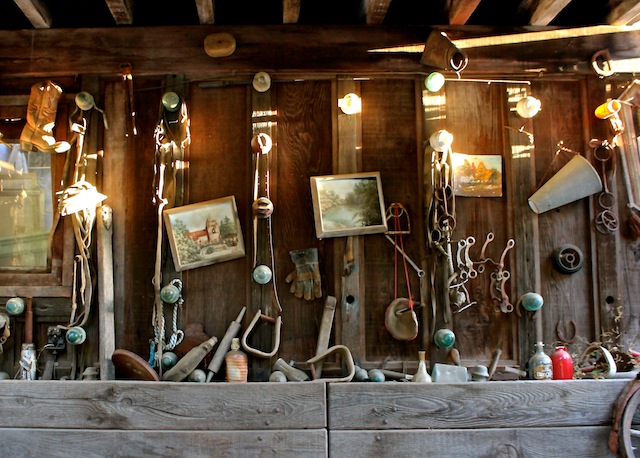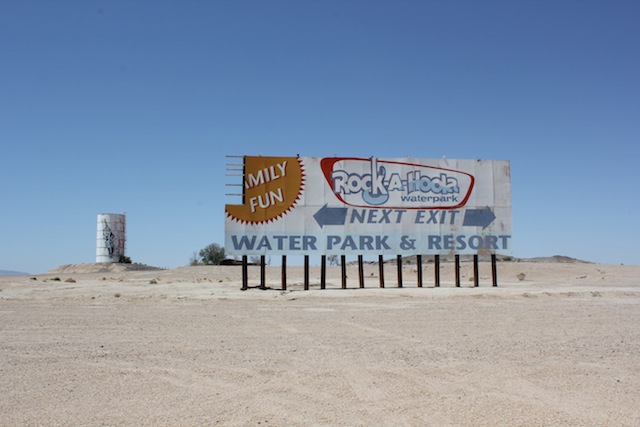High good, low bad: Mead in June 2013
Posted on | July 2, 2013 | No Comments

Lake Powell and Lake Mead, the two largest storage reservoirs on the Colorado River, closed at 48 and 47% full respectively in June. Add in other impoundments and the total system is 52% full according to the federal Bureau of Reclamation.
But enough about the Colorado River and the worrying state of its big drinks. This holiday week, let’s look at the Pacific Northwest. To read about a city that is up to some ingenious new forms of storm water harvesting that do double duty of irrigating an urban park while protecting the Puget Sound, check out this Orion Magazine feature by Cynthia Barnett on Seattle’s Growing Vine Street project.
The mayor’s record on water conservation
Posted on | June 20, 2013 | 8 Comments
In the carrot and stick approach to encouraging water conservation, the tool has been carrot as the City of Los Angeles sees off an old mayor and ushers in a new one. The environmental lobby Climate Resolve recently congratulated outgoing Mayor Antonio Villaraigosa in an e-mail blast by exhorting Angelenos to “Look at the record. Today, Los Angeles uses 20% less water than a mere three years ago.” In a companion text that fleetingly appeared on Climate Resolve’s website, the record became even more impressive. “Today, Los Angeles is using 20% less water than just two years ago.”
I admire Climate Resolve, not least for its cheerleading for the best of good causes, but both claims seemed incredible, so I checked them. According to the Los Angeles Department of Water & Power, there has actually been a rise in consumption in the last two years. However, and this is genuinely impressive, there has been 17.58% reduction since 2007. According to the DWP, the baseline was set in 2006-7, one of driest years on record, because that was the time when Mayor Villaraigosa called for voluntary conservation. By my own analysis, dramatic savings clicked in after 2009, when the Los Angeles City Council passed a mandatory two-day lawn watering ordinance. The savings then slipped in 2011-12 after, as city councilman, LA’s mayor-elect Eric Garcetti led the upending of the two-day ordinance in favor of a three-day system.
High good, low bad: Mead in May 2013
Posted on | June 1, 2013 | 2 Comments

Another 20th century miracle of modern living is being assisted to the scrapheap of time. Yesterday the federal Bureau of Reclamation announced a $500,000 grant to help Southern California homeowners convert from top loaders to more water-efficient front-loading washing machines. This kind of rebate — not new, but not standing policy either, rather a kind of an incipient nod toward the future — is on the rise again as water supplies across the West contract and a disappointing water year winds up this summer. So, if you have a water hog appliance or irrigation system, now is a good time to go dowsing for a deal at your local water supplier.
The grant would probably be larger if the Colorado River system were running on flop-sweat alone. The elevation of the Reclamation-managed reservoir Lake Mead, source of roughly a third of Southern California’s water, closed May 2013 at 48% full. Click here for a look back in time at the highs and lows of the largest storage reservoir in the US.
If this kind of thing interests you, try noting the historical lows, then use either water company board meeting minutes or a newspaper archive to correlate them to items about rebates for washers, toilets and irrigation systems. You’ll find that our water managers elect to bribe us into efficiency when it’s cheaper to save water through emergency conservation measures aimed at existing allocations than to buy new water in trades or when supplemental water is simply unavailable.
If treating chronic dryness with a spot of rebates here and a blaze of low-flow toilet retrofits there instead of striving in a systematic way for efficiency seems odd to you, it is. It’s also the way we manage water. The simplest explanation may be that our water system was set up in a way that public money subsidizes waste. When times get tough, we in very small increments subsidize efficiency.
Tags: chance of rain > Emily Green > Lake Mead elevations > May 2013
High good, low bad: Mead in April 2013
Posted on | May 2, 2013 | 1 Comment

Lake Mead dropped roughly five and a half feet in April, 2013, leaving the largest storage reservoir in the U.S. 50% full. At the end of April, its sister reservoir upstream on the Colorado River, Lake Powell, was 48% full according to a weekly system update from the federal Bureau of Reclamation. Roughly 100 miles west of Lake Mead, near Barstow, California, the at least twice-failed amusement park “Lake Dolores” (latterly the “Rock-a-Hoola Waterpark“) was theoretically immune to supply vagaries of the river serving seven US states and Mexico. It ran on Mojave Desert groundwater. A contractor found on site yesterday, when these photos were taken, seconded Internet chatter that there are plans to re-open it.
Tags: "Rock-a-Hoopla Waterpark" > chance of rain > Colorado River > Lake Mead
Spring 2013
Posted on | April 18, 2013 | 1 Comment




